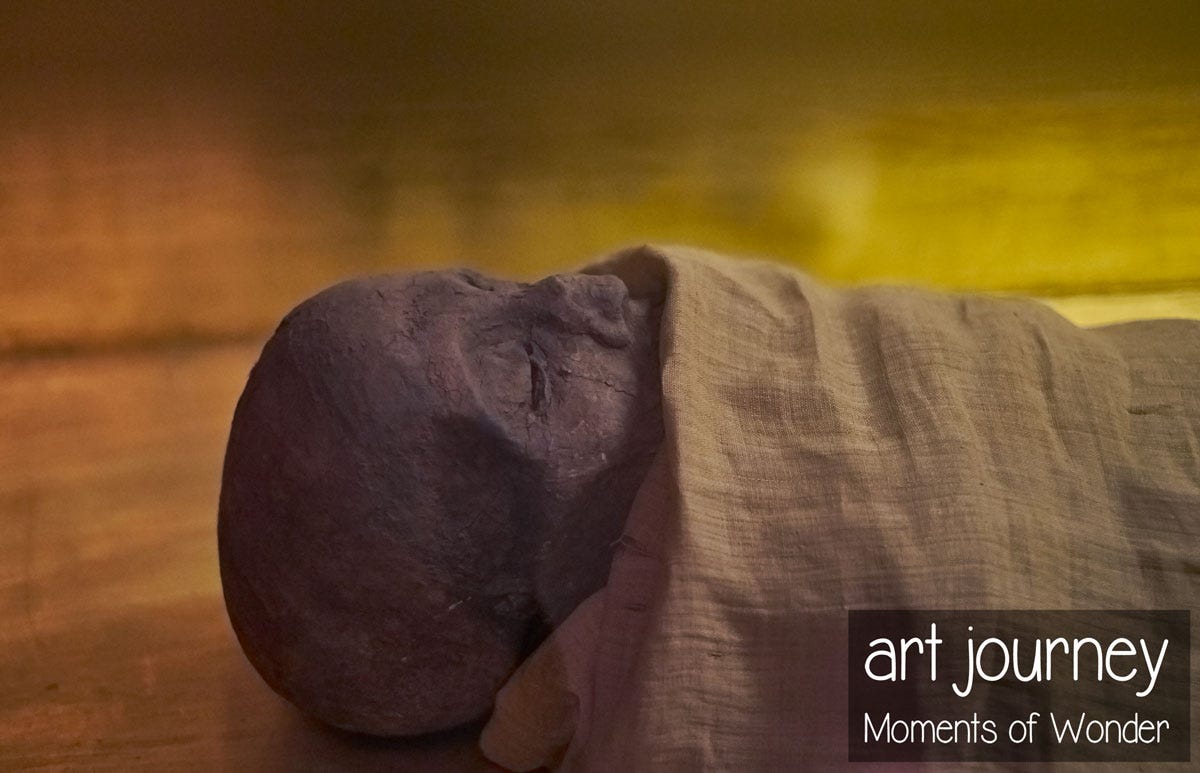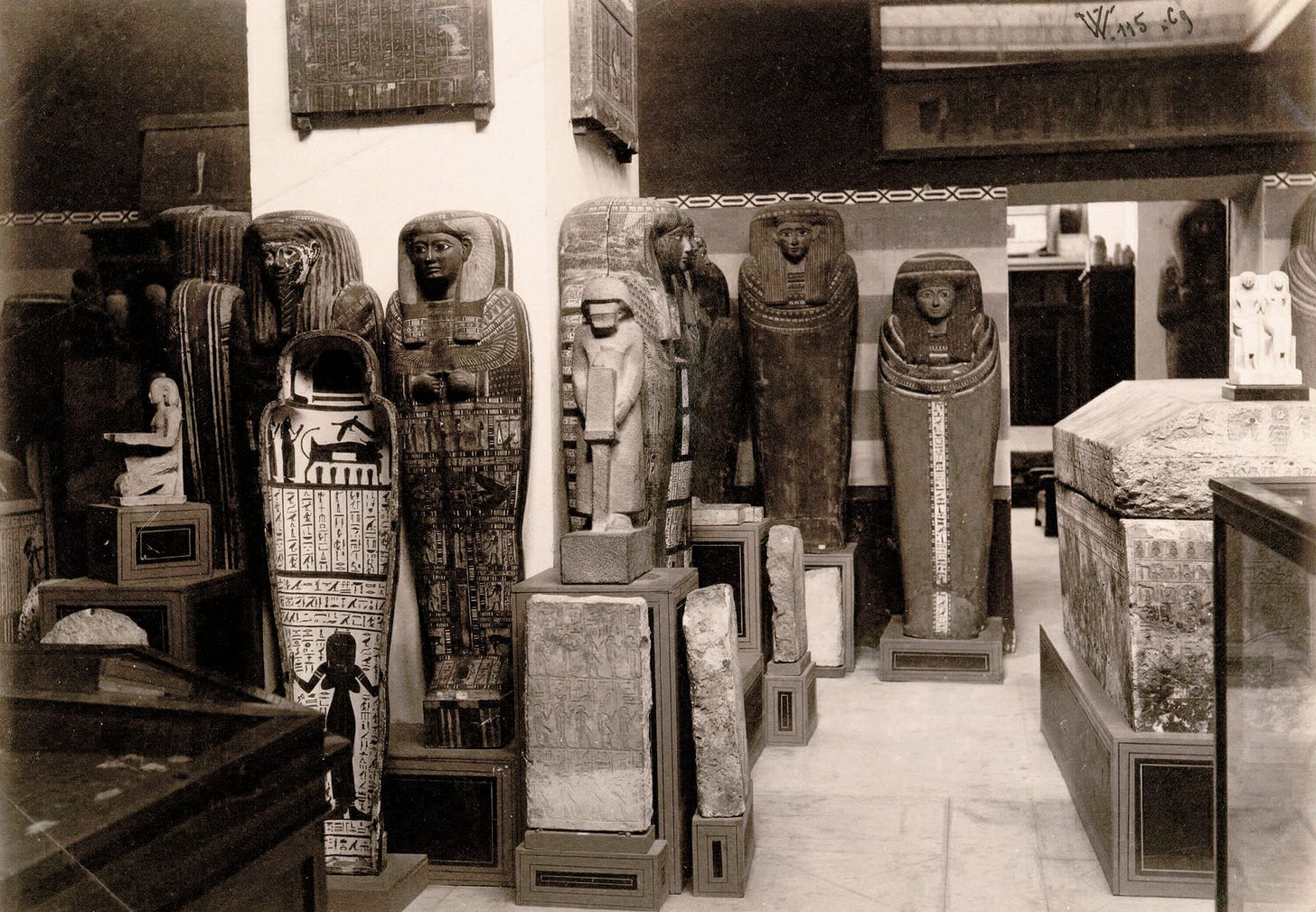When A Pharaoh’s Mummy Was Taxed As Salted Meat
The true story of a Royal Mummy discovered in a pyramid labeled as 'Salted Meat.'
We are in Saqqara, near Cairo, in 1881. Archaeologists just discovered a mummy inside a pyramid.
There was no way to identify the body with certainty. Still, as it was found inside the pyramid of Pharaoh Merenre, it could be the oldest mummy of a Pharaoh ever discovered, at over 4,200 years old.
The archaeologists—two brothers—were eager to bring the Pharaoh straight away to Cairo's museum.
What happened is directly recounted here, edited for clarity:
"Beside the stone coffin, on the floor of the tomb chamber, lay the well-preserved mummy of Pharaoh Merenre".
But the body was in a sad state:
"Treasure-seekers had torn off the body, so that the shreds of the almost transparent and cobweblike linen material lay strewn about everywhere".
Imagine the Pharaoh's mummy as good as naked, put into a random wooden coffin for easy carrying, tied to a donkey, on the way to the railway station to catch the last train to Cairo.
The first hurdle was to get a Pharaoh’s mummy on a train:
"Great astonishment of the railroad officials concerning our dead companion, whom we designated as a very old embalmed magistrate (Schech-el-beled) of the village of Sakkarah.
Since we did not want to be separated from our fellow traveller, we did not travel first class, but boarded the baggage car with him".
But the train stopped far from its destination, forcing the brothers to walk while carrying the King by hand:
"The sun went down, the perspiration ran from our foreheads, the dead Pharaoh seemed to become heavier from minute to minute.
In order to lighten the load, we left the coffin behind and held His dead Majesty at the head end and at the feet.
Then the Pharaoh broke through in the middle and each of us took his half under his arm".
Now, holding half a King under their arm, the two archaeologists' next hurdle was the taxman—any goods entering Cairo had to be inspected and taxed accordingly.
"A new obstacle met us at the customs building directly in front of the great iron bridge of Kasr enj-Nil.
"Nothing taxable in the carriage?" asked the customs officer in the Arabic language. "No, nothing at all, nafisch!"
"But what is this here?" Di-e-di, and with these words he pointed to the two halves of the royal corpse.
"Salted meat," I answered, and secretly pressed a coin into his hand.
"Jallah, go on!" called the officer to the coachman, and our carriage with the three of us rolled across the bridge".
Since mummification involves drying corpses in a salt-like substance, labeling a Pharaoh as 'salted meat' isn't entirely far off.
Yet, going from King to luggage to a dry piece of meat within a few hours was a monumental loss of status.
Pharaoh Merenre I
Today, it is still impossible to know with certainty if this mummy is Pharaoh Merenre I, making it the oldest Pharaoh’s mummy in existence, or someone else buried there at a later date.
In any case, it shows that mummies were indeed discovered inside pyramids.
Discover more with
And contemplate that reality is more interesting than fiction.
Sources
http://www.vlib.us/brugsch/chapter7.html
https://www.researchgate.net/publication/371719346_The_Pyramids_of_Pepi_I_Pepi_II_Merenre







